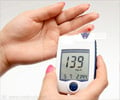
Katya Ravid, DSc/PhD, professor of medicine and biochemistry and director of the Evans Center for Interdisciplinary Biomedical Research at BUSM, led this study.
Diets that are high in fat and cholesterol induce changes in how the body regulates blood glucose levels.
Exercise induces an increased production adenosine, a metabolite produced naturally by cells. A2bAR, a naturally occurring protein receptor found in the cell membrane, is activated by adenosine.
This receptor is known to play an important role in regulating inflammation, which is associated with type 2 diabetes and obesity.
To examine the association of A2bAR activation with a diet high in fat and cholesterol, the researchers used an experimental model that lacked A2bAR and compared the results with a control group.
Advertisement
The signs demonstrated in the study included elevated blood glucose levels and increased in insulin levels. When the control group was given the same diet, however, the levels of A2bAR increased, resulting in decreased insulin and glucose levels and obesity.
Advertisement
The results showed that the level of IRS-2, a protein that has previously been shown to mediate the effect of insulin, was impaired in tissues of the experimental model lacking A2bAR, causing higher concentrations of blood glucose.
When A2bAR was activated in the control group using a pharmacologic agent with a diet high in fat and cholesterol, the level of IRS-2 was upregulated, lowering blood glucose.
"The pharmacologic activation of A2bAR demonstrated its newly identified role in signaling down to regulate the levels of IRS-2, which then improved the signs of high fat diet-induced type 2 diabetes," said Ravid.
The prevalence of type 2 diabetes and obesity continues to increase in developed countries and both factors are known to contribute to the development of cardiovascular disease.
To correlate these results in humans, the researchers then examined fat tissue samples from obese individuals. The results showed that A2bAR expression is high in fat from obese individuals, marked by inflammation, compared to lean ones, and is strongly correlated with IRS-2 expression.
"Our study suggests the important role of A2bAR in maintaining the level of IRS-2, a regulator of glucose and insulin homeostasis," Ravid added.
The findings are published online in PLoS ONE.
Source-ANI















